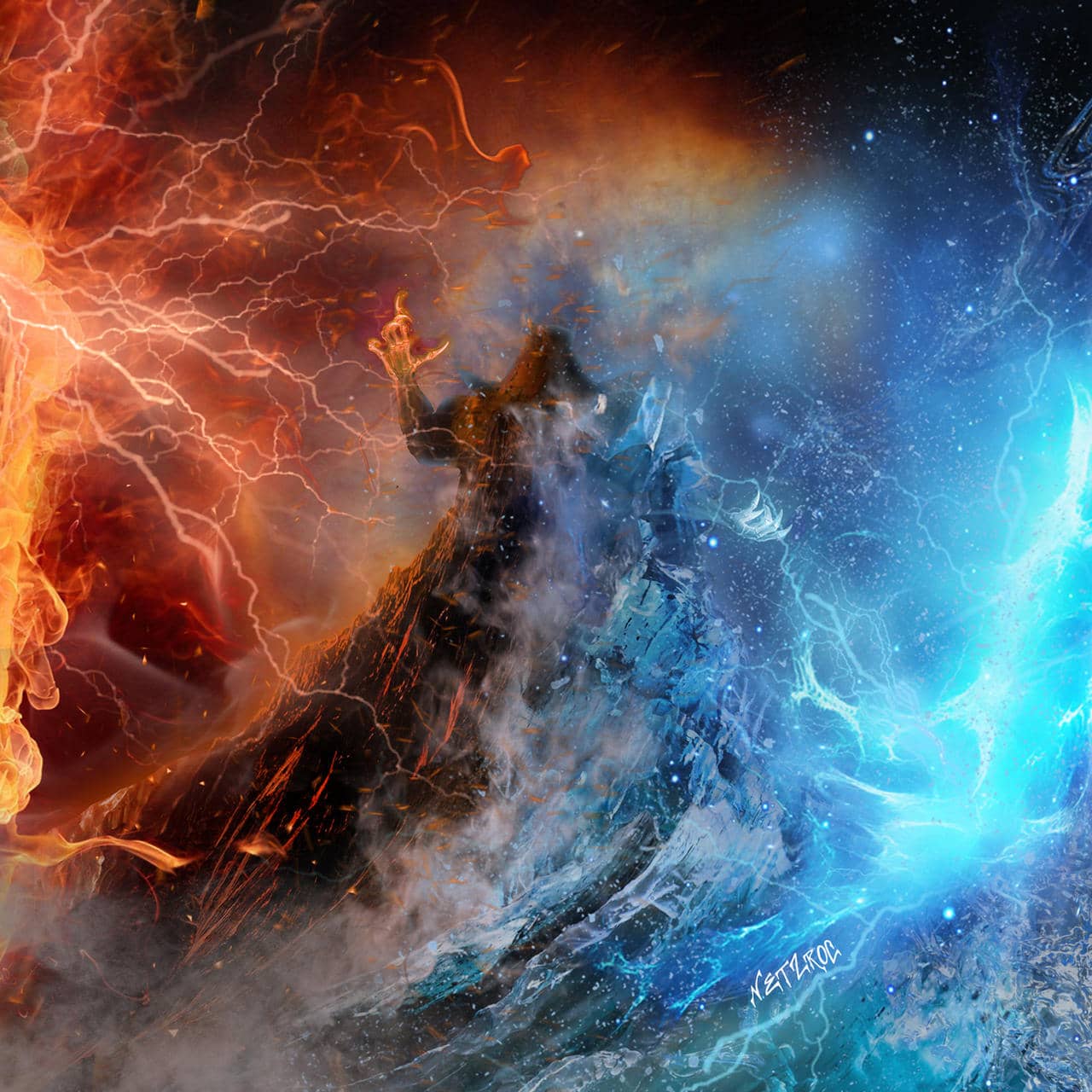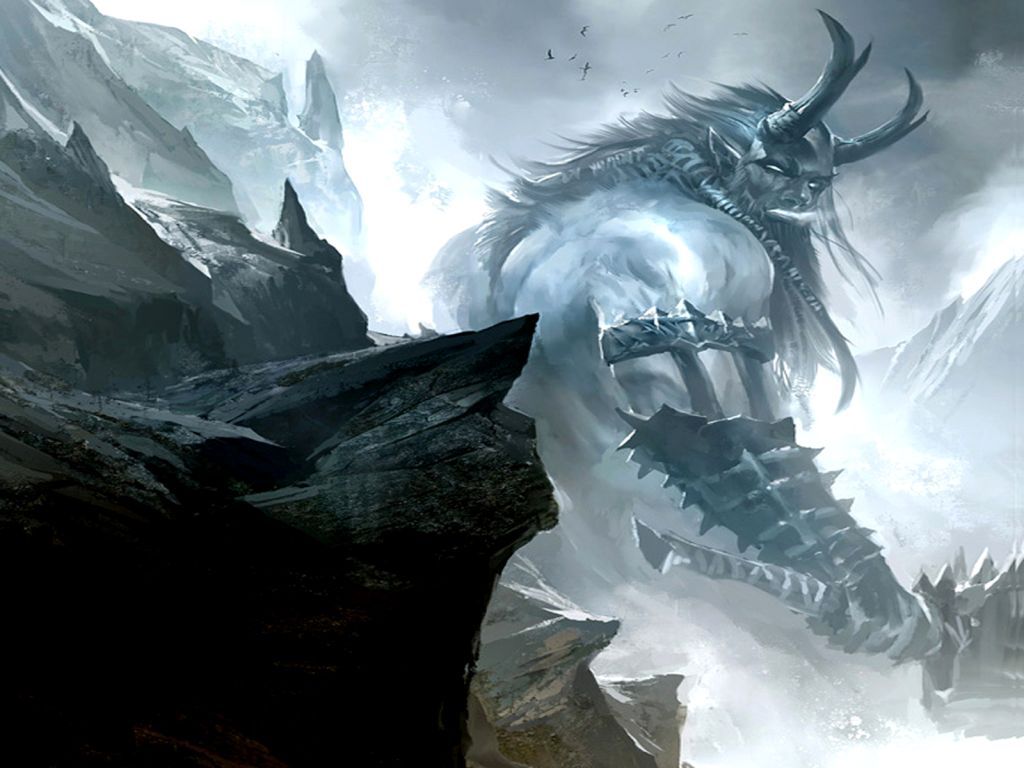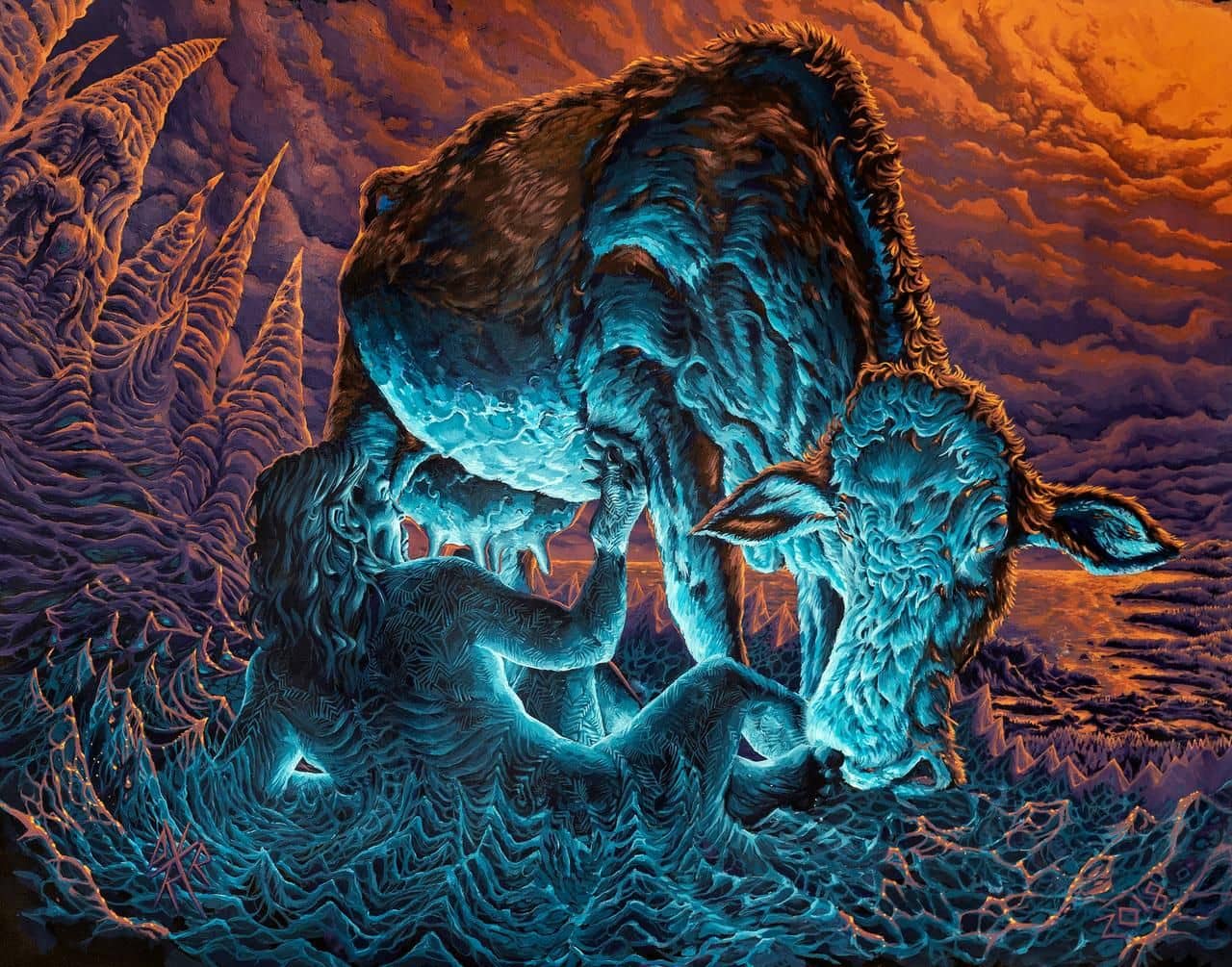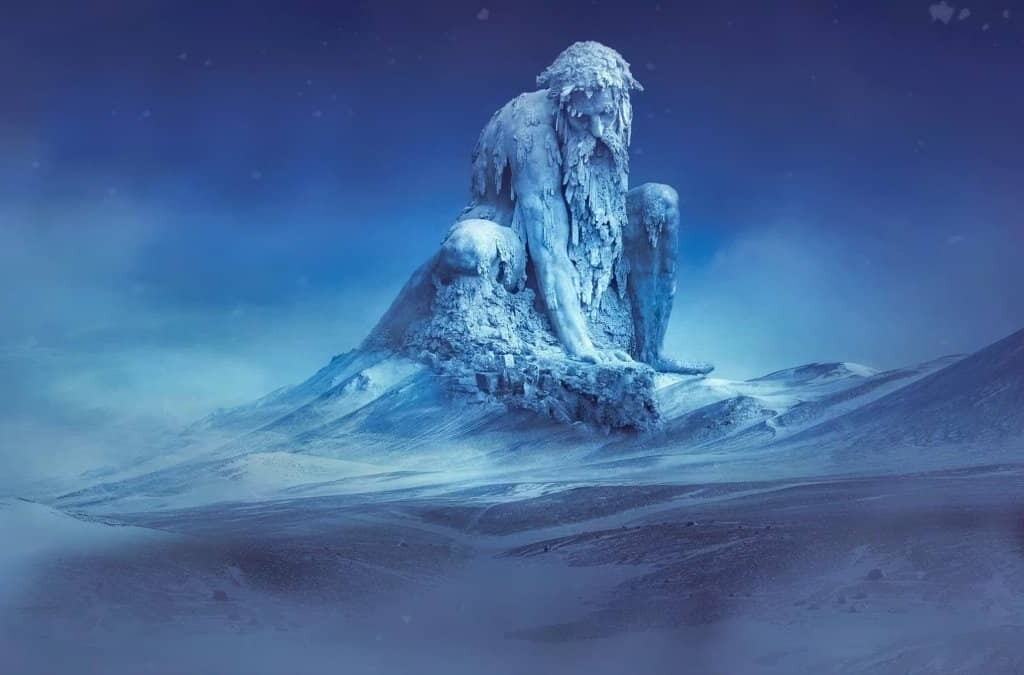The Sagas and the Eddas are the two main sources used to record Norse mythology. The former are collections of legendary and historical accounts written by unidentified authors, mainly from Iceland. On the other hand, the core of Norse mythology is found in the Eddas.
Fundamental concepts of Norse mythology
There are two main subgroups of the Eddas: the poetic or central Edda and the prose or minor Edda.
Around 1220, Snorri Sturlinson took it upon himself to compile the Lesser Edda, which preserved the oral traditions of the Scandinavian peoples forever. The second collection, the Great Edda, was written by the enigmatic Saemund “the wise” and completes the first.
In it, we find the famous Voluspa, which tells the story of how Odin met Volpa, an intelligent witch who would later share her knowledge of the creation of the universe.
The creation of the universe

The Ginnungagap existed in the beginning. It was the void, the vast and endless abyss; what the Egyptians called the Primordial Waters, the Night of the Bible, or the Chaos of the Greeks.
However, it was a super-order beyond the capacity of human reason, not chaos caused by the disorder. The beginning of cosmological mythology takes place at this point when there are no objects and no cosmos.
Niflheim
The Niflheim, the endless mist, freezes in the womb of this world, the Ginnungagap and the frozen manifests.
Then the Invisible God, who is at the bottom of the abyss, sent a scorching wind which, using the heat of the Muspelheim (the primordial fire), melted the ice and dissipated the fog.
The absolute stillness of the ice and the constant speed of the fire – the conflicting duality – will give rise to all things. These two primordial drives are the ones that, in their eternal harmonic battle, through encounters and misencounters, will set and keep life in motion.
When Plato explains in The Timaeus that the Demiurge uses earth and fire to create the cosmos and then needs water and air as intermediate components to unify creation, he reminds us of these concepts.
The Earth and the first creatures
The Earth and the first creatures that inhabit it, the giant Ymir and the cow Audumla, will emerge from the thawing of the primordial waters.

In key interpretation, the huge Ymir represents matter, which has only recently distinguished itself from the primordial chaos; the first process of creation in which the natural elements exist for the first time.
The Great Universal Mother, the cosmic soul that will keep all creation unified and vibrant, is represented by the cow Audumla, on the other hand.
The inactive seas of ice are lapped up by Audumla, who then transforms them into milk that the enormous Ymir can consume. From Audumla’s udders will emanate the four rivers of the universe, which will hydrate all of creation. It is fascinating to note that several traditions include the concept of the cow.
Siddhartha Gotama
The name Siddhartha Gautama is related to the one who guides the cow Go and in African traditions, cows are seen as God’s creation through which men descend to Earth to graze them as they eat.
Other examples are Kamadhemu in India, within which all the gods reside, Hathor in Egypt, who will be the one to protect Horus and Buddhist traditions.
The idea that milk was the first pure food of creation is also significant; the word galaxy derives from the Greek word gala, which meant milk in the ancient world and the Milky Way is the name of the region of the cosmos where our solar system is located.

Buri, “the creator”
A large piece of ice will be licked by Audumla and from within it will emerge, Buri, “the creator”.
Bor and Bestla’s three main Norse gods – Odin, Vili and Vé – are sons of Bor and Bestla. Giants and gods will now engage in constant combat until Ragnarok, the moment when the universe ends. The struggle is again seen as the source of life in the Norse psyche.
The first beings to be created will be this celestial trinity of gods and with them, creation is completed. To build the universe, the three brothers must slay the giant Ymir.
Nordri, Sudri, Austri and Vestri, the four cardinal points and the four dwarves will support the celestial vault, which will rise with the help of their skull. Their blood will give origin to the oceans, the rivers and all the liquids of the world. Their teeth will form the mountains.
The four cardinal points, Nordri, Sudri, Austri and Vestri, the four dwarves, will support the celestial vault, which will rise with the help of their skull. Their blood will give origin to the oceans, the rivers and all the liquids of the world. Their teeth will form the mountains.
Since the struggle between generations for the creation of a new world is often depicted in mythologies, the idea that the gods of a third or older generation will confront the giants or monsters that precede them seems a natural rule.
Zeus killed his father Cronus in Greece, while Marduk cut the sea monster Tiamat in half in Mesopotamia, ending the conflict between the gods and the Titans.
This process represents a transition from chaos, often referred to as cosmos, to order. Chaos, which still lacks a defined form and is always at war, will be divided, distinguished and ordered by a deity, who will place each object in its proper place to better serve the progress of cosmic evolution…

